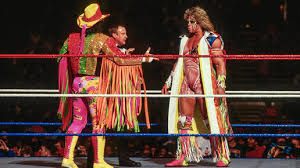What Ekta Kapoor could learn from the longest-running soap opera: It has more stars than Hum Saath Saath Hain, a bigger budget than Dharma

When it comes to Indian television, the name Ekta Kapoor is practically synonymous with drama. From Kyunki Saas Bhi Kabhi Bahu Thi to Naagin, her Balaji Telefilms has created an empire of teary-eyed bahus, over-the-top plot twists, and ageless grandmothers. But while Kapoor has defined the rules of Indian daily soaps, there’s a global counterpart that’s been playing the long game—and winning.
We’re talking about the longest-running soap opera in television history—America’s General Hospital, which has been on air since 1963. That’s over 60 years of continuous storytelling, evolving narratives, and audience loyalty. With a legacy like that, it’s worth asking: What can India’s queen of soap operas learn from this international juggernaut?
Let’s dive in.
1. Ensemble Casts with Real Purpose
Indian soaps love large families. Shows like Kahaani Ghar Ghar Kii and Kasautii Zindagii Kay have introduced more characters than most people have cousins. But quantity often overrides quality. Supporting characters in Indian soaps tend to float in and out without much development.
Contrast that with General Hospital, which has seen hundreds of characters come and go, yet manages to give even minor roles meaningful arcs. Whether it’s doctors, detectives, mobsters, or nurses, every character exists for a reason. Relationships are built slowly, conflicts evolve naturally, and everyone has a backstory that matters.
Lesson: Don’t just cast for headcount. Every character should add depth to the story, not just drama.
2. Consistency Beats Chaos
Indian daily soaps are infamous for their frequent time leaps. One day a child is born, the next day they’re a 25-year-old CEO. These leaps often reboot the story but at the cost of continuity.
Meanwhile, General Hospital progresses in real time. Characters age naturally, relationships evolve realistically, and plotlines are carefully layered over years, not weeks. It respects the intelligence and emotional memory of its audience.
Lesson: Let the story grow, don’t skip its evolution.
3. Production Value Matters
Ekta Kapoor raised the bar for Indian TV production. Her shows introduced luxurious sets, designer sarees, and glittering visuals. But Western soaps like General Hospital take it a step further—with budgets that allow for cinematic storytelling, location shoots, stunt sequences, and professional-grade lighting and makeup.
In the age of HD and streaming, viewers expect more than melodrama—they expect visual excellence.
Lesson: Good storytelling deserves good production. Invest in quality, not just quantity.
4. Themes Beyond Tradition
Indian soaps tend to revolve around predictable tropes: arranged marriages, saas-bahu conflicts, evil twins, and supernatural elements. While they entertain, they often stay within conservative boundaries.
On the other hand, General Hospital isn’t afraid to tackle bold, relevant themes—from mental health and addiction to LGBTQ+ relationships, terminal illnesses, and systemic injustice. These shows reflect real-world issues without losing dramatic flair.
Lesson: Don’t be afraid to explore stories that challenge norms. Audiences are ready for change.
5. Writing That Respects the Audience
Many Indian soaps rely heavily on melodrama, loud music, and stretched plotlines. Sometimes, a character takes three episodes just to fall down the stairs.
Western soaps, while dramatic, tend to have tighter scripting. General Hospital scripts are often sharp, witty, and emotionally layered. Writers know how to balance plot progression with character development—without dragging it out unnecessarily.
Lesson: Trim the excess. Trust your viewers to follow complex stories without spoon-feeding.
6. Self-Awareness and Humor
One thing that makes General Hospital a fan favorite is its ability to occasionally poke fun at itself. It acknowledges past absurdities, embraces fan theories, and sometimes breaks the fourth wall in subtle ways.
Indian soaps, by contrast, often take themselves too seriously. There’s little room for satire, irony, or self-reflection.
Lesson: A little humor goes a long way. Don’t be afraid to laugh with your audience.
7. Long-Term Vision
Many Indian TV shows are created with short-term TRP goals. If a storyline doesn’t work within two weeks, producers panic, kill off characters, or introduce black magic. This reactive model leads to inconsistency.
Western soaps are built with long-term arcs in mind. Writers plan years ahead, mapping out character journeys that feel earned and impactful. This not only builds loyalty but allows for richer storytelling.
Lesson: Plan for the long haul. A well-seeded plotline will always bloom.
Conclusion: Evolution Over Repetition
Ekta Kapoor is undeniably a pioneer in Indian television. Her work has shaped viewing habits and launched careers. But as global audiences become more discerning and platforms become more competitive, there’s value in adapting and evolving.
The longest-running soap opera in the world didn’t survive by repeating itself—it survived by reinventing itself while respecting its roots. If Kapoor takes a leaf from their script, she could not only extend the shelf life of her shows but also deepen their impact.
After all, even in the world of drama, longevity is the truest test of success.






